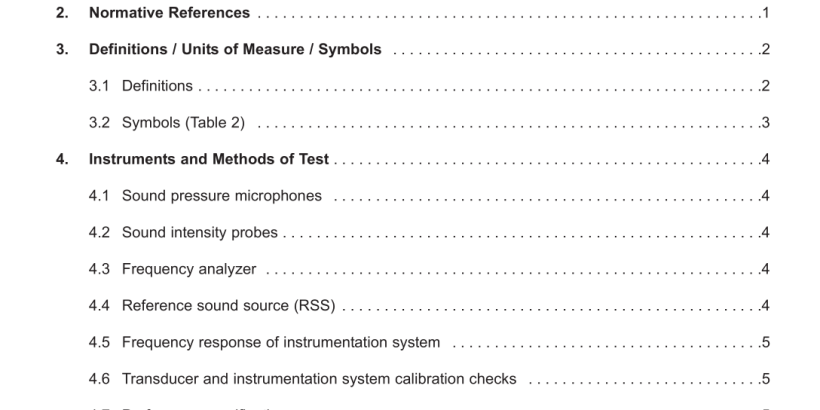ANSI AMCA 320-2008 pdf download.Laboratory Methods of Sound Testing of Fans Using Sound Intensity
4.4.2 The RSS shall produce steady, broadband sound over at least the frequency range from 50 Hz to 10,000 Hz. It shall comply in all respects with the performance requirements of ANSI S12.5 except for the spectral characteristics of the 50 Hz and 10,000 Hz one-third octave bands, where the sound power may deviate by up to 6 dB from the sound level of the adjacent one-third octave band. The sound power output shall be high enough so that the sound pressure and sound intensity levels shall be greater than the background noise levels. See Section 7.2.
4.4.3 The RSS shall be equipped with vibration isolators to minimize vibration transmission from the RSS into the structure of the room. The degree of isolation should be 20 dB or more. If metal springs are used as vibration isolators, rubber pads shall be used between the isolator and the structure of the room.
4.4.4 To ensure compliance with the stability requirements of ANSI S12.5, all operating parts of the RSS shall be rigidly and permanently attached. No rubbing or wearing parts shall be permitted (except lubricated bearings) and protection shall be provided against corrosion.
4.4.5 The RSS calibration shall consist of a determination of the sound power level radiated by the source when it is in operation on a reflecting plane with radiation into a free field above that plane. The calibration shall be in accordance with the requirements of ANSI S12.5, or as provided in Annex F. The maximum time interval since calibration shall not exceed that specified by the manufacturer, or three years, whichever is shorter.
4.8 Test method
The basis of the test method originates in ANSI S12.12. The test method covers a wider frequency range and contains requirements somewhat more specific and restrictive than those of ANSI S12.12, and also provides for sound power level adjustments as described below. With the exception of the adjustments, however, measurements made in conformance with this test method will be in conformance with ANSI S12.12 over their common frequency range. The basic requirement is measurement of the sound intensity distribution around the fan. A measurement surface is defined which encloses the entire fan, fan inlet, or fan outlet, depending upon the objective of the test. A set of sound intensity measurements is made about this surface. The average of these measurements is compared with the average of a set containing half the number of measurements, to ensure the adequacy of the number of measurements and the accuracy of the average. The sound power level is calculated using the surface area and the measured sound intensity data. Adjustments are made based on measurements of a calibrated RSS and, if needed, for the appropriate test configuration for duct end correction. Prior to sound intensity measurements on the source of interest, the sound intensity measurement instrumentation and personnel are to be qualified by conducting measurements about an RSS. The sound power levels resulting from the test method can be expected to be identical to those that would be produced using ANSI/AMCA 300, within the accuracy of both methods, to the extent that each method is applicable and that the installations tested are identical. It should be noted that the present method differs substantially from ANSI/AMCA 300 in both the test environment requirements and the measured quantities.ANSI AMCA 320-2008 pdf download
